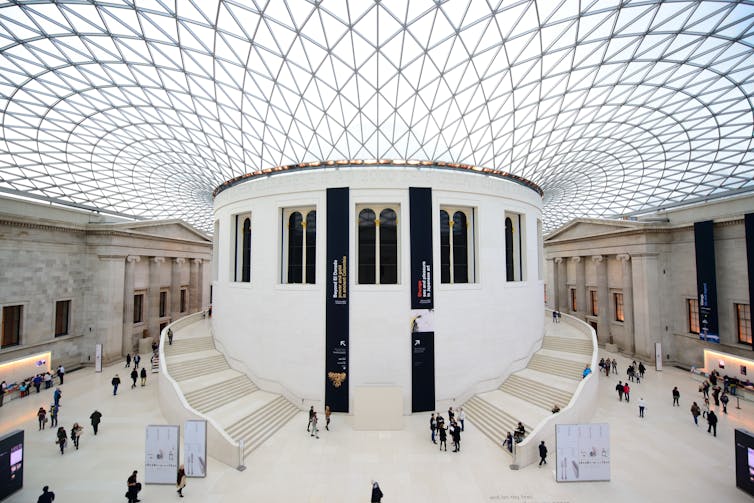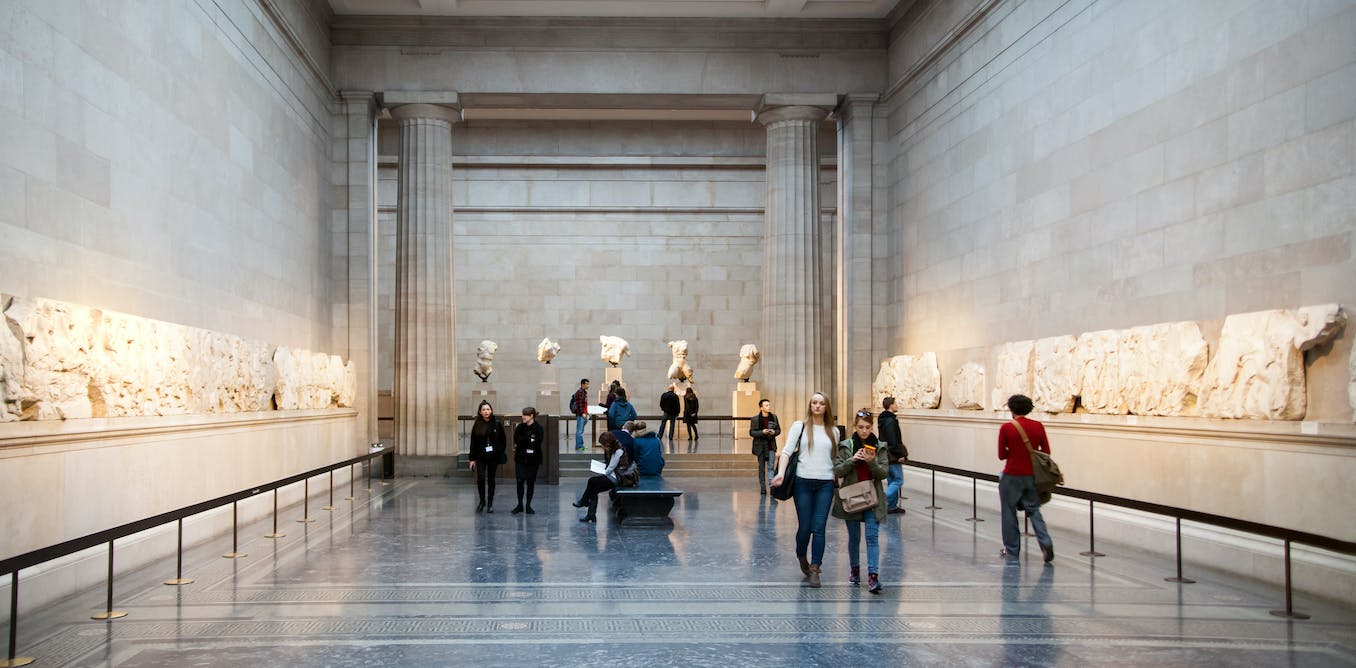Since mid-August, the British Museum has been mired in a controversy over the theft of up to 2,000 objects from its collections. The theft is suspected to be an inside job that took place over a period of 20 years. Alerted to the sale of alleged stolen items in 2021, the museum did not take action until earlier this year.
This is not the first time the Museum has come under fire and its custodianship has been questioned (paywall). This article turns its attention to some notorious incidents involving the curation of its collection.
The Duveen scouring
There can be little doubt that the most notorious of them is the Duveen scouring scandal, so-named after Joseph Duveen, an ultra-rich art dealer of dubious ethics and benefactor of the British Museum. For a long time, museum officials had argued that the Parthenon marbles had better remain in Bloomsbury, because the Greeks were unable to care for them. That argument was abandoned sometime after it was revealed that back in the late 1930s the museum had scraped the marbles with abrasive tools, destroying their historic surface, its pigments and traces of toolmarks.
Ancient Greek temples were richly painted but remnants of colour were not to Duveen’s liking. A trustee of the British Museum described Duveen’s attitude at the time:
‘Duveen lectured and harangued us, and talked the most hopeless nonsense about cleaning old works of art. I suppose he has destroyed more old masters by overcleaning than anybody else in the world, and now he told us that all old marbles should be thoroughly cleaned – so thoroughly that he would dip them into acid. Fancy – we listened patiently to these boastful follies …’
Duveen’s men were given free access to the museum and were even allowed to give orders to staff. Soon, in a misjudged attempt to whiten what remained of the originally polychrome decoration, they started to scrub the marbles. The ‘cleaning’ lasted for fifteen months before it was stopped in September 1938. An internal board of enquiry convened at the time came to the conclusion that the resulting damage ‘is obvious and cannot be exaggerated’.
Tactical considerations prevailed: it was important to avoid a blow to the museum’s reputation, so it kept quiet and denied that anything untoward had occurred. Documents related to the affair became, to all intends and purposes, classified. The marbles were later placed in the Duveen Gallery, named in honour of the man responsible for the damage to their historic surface.
The cleaning was kept a secret for 60 years until it was exposed by the British historian William St. Clair in 1998. Previously in favour of the retention of the marbles in the British Museum, St. Clair became one of the most vocal proponents of their repatriation.
The Duveen scouring was not the only modification of the marbles to cause consternation. A series of letters published in The Times as early as 1858 expressed concern about ‘scrubbing’ of the marbles and blamed the museum for ‘vandalism’. It is probable that, if these early warnings had been headed, the Duveen scandal could have been avoided.
Creative Commons/Wikimedia, CC BY
Other controversies
Other incidents have tarnished the British Museum’s reputation. Documents released under freedom of information legislation show that in the 1960s and 1980s members of the public and a work accident permanently damaged figures from the Parthenon’s pediments.
During a 1999 conference in the museum, a sandwich lunch was served in the Duveen Gallery, and the delegates were encouraged to touch the ancient sculptures. Many among those present found the gesture so inconsiderate that they walked out of the gallery. A journalist writing for The New York Times commented: ‘On Seeing the Elgin Marbles, With Sandwiches’.
Another controversial incident was the 2014 secret loan of the pedimental statue of the river god Ilissos to the State Hermitage Museum in St. Petersburg, at a time when Europe had imposed sanctions on Russia for its annexation of Crimea. The loan was not announced until the statue had been transferred to Russia.
A controversy of a different kind concerns contested objects in the museum’s collection that are the object of repatriation requests. In contrast with other institutions, such as the V&A, the British Museum has been facing a chorus of restitution claims concerning very specific objects in its collection. The Museum has staunchly refused to engage in the debate, although since the beginning of the year it has been attempting to convince Greece to accept a ‘loan’ of the Parthenon marbles, apparently considering this to count as entering the repatriation debate.
Of course, the Museum is bound by the 1963 British Museum Act, which prevents the museum from deaccessioning (disposing of) objects in its collections except on limited grounds, but that is a discussion for a different article.
The museum’s current troubles
Now the British Museum is trying to repair the dent to its reputation, which comes at an inconvenient time when the museum is hoping to raise £1 billion for much-needed renovation work.
About half of the museum’s 8 million items are uncatalogued and this lack of an inventory has certainly facilitated the thefts. The fact that it took so long to discover the thefts also raises the question of what else might have gone missing without a trace.
Yet one can’t help but wonder: Do the museum’s current woes have other museum directors fretting with anxiety? How many museums have uncatalogued items in their storerooms? When a museum such as the Louvre explains that its database has entries for almost 500,000 works of art, is that its entire collection or just a percentage of its collection? In a great number of cases, we simply don’t know.

Shutterstock/Songquan Deng
The British Museum has yet to announce the exact number of stolen objects. But how does one know the exact number of what has gone missing without an inventory? More challenging still, how does one identify the objects, let alone prove ownership?
The secrecy is highly unusual. Sharing information about stolen objects helps identify and recover these objects. Interpol maintains an accessible database of stolen artworks precisely for that reason. But in order to enter an object in the database, it has to be ‘fully identifiable’. And the issue here is that the museum is probably still trying to identify what has gone missing. How do you fully identify an uncatalogued unphotographed object?
The secrecy could be attributed to another cause too. What if some of the identified stolen items are contested items that have been the object of restitution requests? For the time being, we can only speculate.
Crisis as an opportunity
Every crisis is an opportunity, and here too there is an opportunity. After the resignation of the director Hartwig Fischer, an interim director, Mark Jones, has been appointed. The permanent post is up for grabs. Among those mooted for the museum’s top job is Tristram Hunt, the Director of the V&A, who appears to have been behind the initiative to revise museum deaccessioning laws. The selection of the next Museum Director is a crucial step in moving towards a modern British Museum that not only renovates its galleries but rebuilds its image in accordance with the new values of the 21st century.



